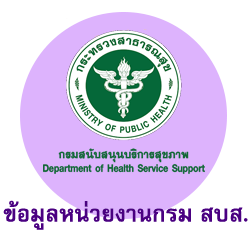DEVELOPMENT OF EYE IRRITATION TEST BY USING THE ISOLATED CHICKEN EYE TEST, LAC-THAI NIH
Keywords:
eye irritation test, solated Chicken Eye tes, ocular irritation index, histopathological eye effectAbstract
Laboratory Animal Center Thai NIH has developed the Isolated Chicken Eye (ICE) eye irritation test method to meet the criteria of OECD Test Guideline No.438, which is the test for identifying safety and classify irritants. This assessment is evaluated the ICE test with ocular irritation index and histopathological eye effect in corneal chicken. Results from a total of 26 chemicals categorized by the United Nations Globally Harmonized System of Classification and Labelling of Chemicals conducted with ICE test showed that the ocular irritation index and corneal opacity value obtained from Category 2A (irritant) and 2B (mild irritant) substances had statistically significant when compared to Category 1 (severe irritation) substances. While the score of corneal epithelial necrosis obtained from Category 2A and 2B substances were significant finding when compared to Category 1 substances. Therefore, the evaluation of the irritant index in combination with the histopathology for ICE test will increase the test efficiency.
References
Barile , F.A. (2010). Validating and Troubleshooting Ocular In Vitro Toxicology Tests. Journal of Pharmacological and Toxicological Methods, 61(2): 136-145.
Barroso, J., et al. (2017). Cosmetics Europe compilation of historical serious eye damage/eye irritation in vivo data analysed by drivers of classification to support the selection of chemicals for development and evaluation of alternative methods/strategies: the Draize eye test Reference Database (DRD). Archives of Toxicology Journal, 91(2): 521-547.
Boonyareth, M., Inkomlue R., Sachanonta N., Sangkitporn S. (2018). Method Verification of Isolated Chicken Eye Test. Bulletin of The department of Medical Sciences Journal, 60(4): 168-180. (in Thai).
Cazelle, E., et al. (2014). Suitability of histopathology as an additional endpoint to the Isolated Chicken Eye Test for classification ofnon-extreme pH detergent and cleaning products. Journal of Toxicology in Vitro, 28(4): 657-666.
Gibson, KN., Olivier, AK., Meyerholz, DK. (2013). Principles for valid histopathologic scoring in research. Journal of Veterinary Pathology, 50(6): 1-22.
Kolle, SN., Cott, AV., Ravenzwway, BV., Landsiedel, R. (2017). Lacking applicability of in vitro eye irritation methods to identify seriously eye irritating agrochemical formulation: Results of bovine cornea opacity and permeability assay, isolated chicken eye test and the EpicularTM ET-50 method to classify according to UN GHS. Journal of Regulatory Toxicology and Pharmacology, 85(2017): 33-47.
Lotz, C., et al. (2016). Alternative Methods for the Replacement of Eye Irritation Testing. Journal of ALTEX, 33(1): 55-67.
Miller, MA., Zachary, JF. (2017). Mechanisms and Morphology of Cellular Injury, Adaptation, and Death. Pathologic Basis of Veterinary Disease, Retrieved January 22, 2021, from: https://www.ncbi.nlm.nih.gov/pmc/articles/PMC7171462/
OECD. (2018). OECD GUIDELINE FOR THE TESTING OF CHEMICALS. Retrieved February 16, 2021, from: https://www.oecd-ilibrary.org/environment/test-no-438-isolated-chickeneye-test-method-for-identifying-i-chemicalsinducing-serious-eye-damage-and-iichemicals-not-requiring-classificationfor-eye-irritation-or-serious-eye-damage_9789264203860-en
Prinsen, MK., Schipper, MEI., Wijnands, MVW. (2011). Histopathology in the isolated chicken eye test and comparison of different staining of the cornea. Journal of Toxicologyin Vitro, 25(7): 1475-1479.
Prinsen, MK., Hendriksen, C., Krul, C., Woutersen, RA. (2017). The Isolated Chicken Eye test to replace the Draize test in rabbits. Journal of Regulatory Toxicology and Pharmacology, 85(2017): 132-149.
Ritchey, ER., et al. (2011). The chicken cornea as a model of wound healing and neuronal reinnervation. Journal of Molecular Vision, 17: 2440-2454.
Wilson, SL., Ahearne, M., Hopkinson, A. (2015). An overview of current techniques for ocular toxicity testing. Journal of Toxicology, 327(2015): 32-46.
Downloads
Published
How to Cite
Issue
Section
License

This work is licensed under a Creative Commons Attribution-NonCommercial-NoDerivatives 4.0 International License.



